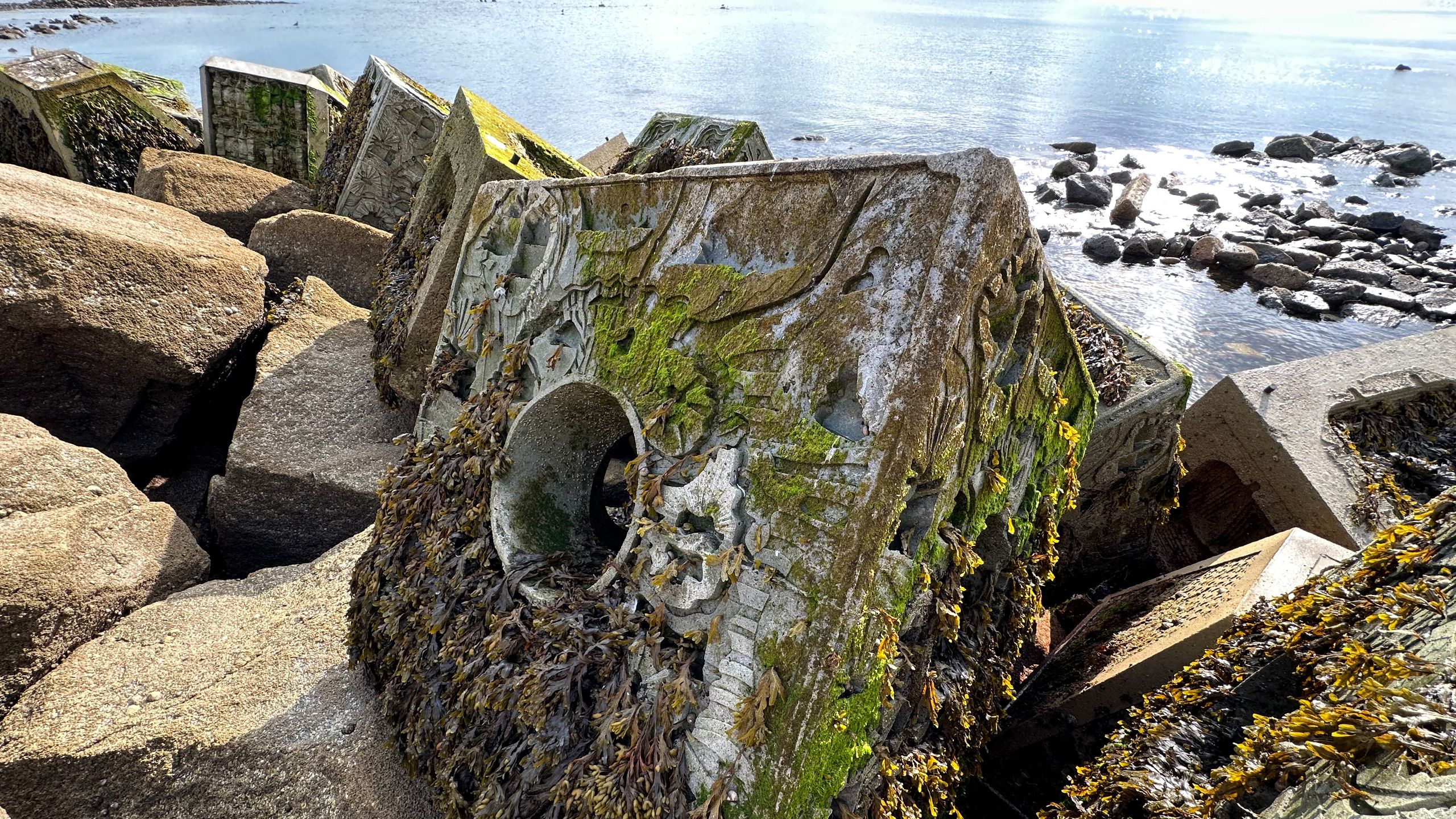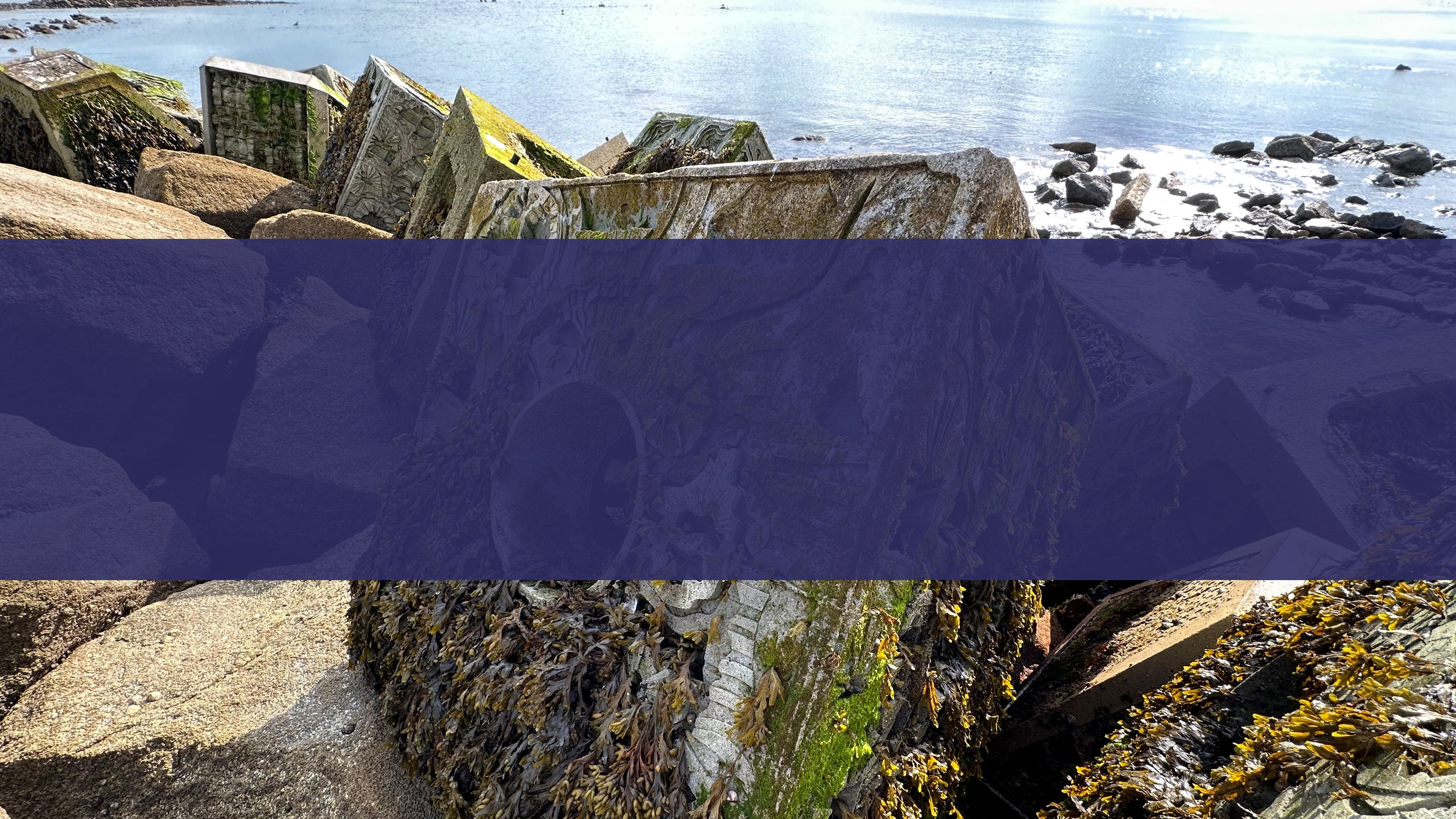Low carbon cement replacement for pre-cast concrete products
The development of low-carbon concrete could offer an alternative to cement in infrastructure based both on land and at sea.

Low carbon cement replacement for pre-cast concrete products
The development of low-carbon concrete could offer an alternative to cement in infrastructure based both on land and at sea.
The UK is a leader in offshore energy and currently has the highest level of installed wind energy capacity of any country in the world.
However, while large offshore wind farms play a significant role in reaching Net Zero targets, the concrete required for their construction and protection also comes with an environmental cost.
Production of a key component of concrete, Portland cement, currently causes 8% of global carbon emissions. A new project is developing an alternative to traditional sub-sea protection with concrete that is not only low carbon but also available in pre-cast designs that encourage biodiversity in marine ecosystems.
With funding from the Transforming Foundation Industries (TFI) challenge, eco-engineering firm ARC Marine is building on its low-carbon concrete technology, ‘Marine Crete’.
“Marine Crete replaces Portland cement with Alkali Activated Cementitious Materials (AACMs) made with industrial waste, such as fly ash,” explains ARC Marine CEO and co-founder Tom Birbeck. “The mix also utilises by-products from granite and clay industries instead of virgin aggregate and can be produced with seawater instead of freshwater. It has the potential to save more than 80% of greenhouse gas emissions compared with cement-based concrete.”

“Marine Crete has the potential to save more than 80% of greenhouse gas emissions compared with cement-based concrete.”

Marine Crete is used in all the company’s marine protection products, including the Marine Matt for the protection of sub-sea pipes and cables and reef cubes®, artificial reef units for coastal defence and sub-sea protection against scour and wave action. Rather than flat, featureless pre-cast concrete, the products are scientifically designed with crevices and textures that encourage and support marine flora and fauna.
To meet the ever-growing demand for marine development, a key aim of the project was to test tools for scaling the production of the products and optimise the mix for integration into several manufacturing methods.
“We are also trialling the use of Marine Crete in land-based products,” says Birbeck. “We have been developing and testing to ensure it is fit for purpose for use in products such as paving slabs, edgings or kerb stones, which could open up its potential as an alternative to pre-cast concrete for a wide number of civil engineering projects.”
The project has helped the company move towards scaled production, and they are now set to deliver large orders, such as 6,000 reef cubes for offshore wind farms.
“There is increasing demand for marine infrastructure, not just from offshore energy, but in protecting coasts from the effects of extreme weather and rising sea levels. There is also a necessity for marine projects to incorporate low-carbon, nature-inclusive design at the heart of the planning process to achieve net biodiversity gain,” says Birbeck. “Marine Crete offers a much-needed alternative to cement and helps balance our growing need for renewable energy with our responsibility for our marine environment.”

Marine Crete is used in all the company’s marine protection products, including the Marine Matt for the protection of sub-sea pipes and cables and reef cubes®, artificial reef units for coastal defence and sub-sea protection against scour and wave action. Rather than flat, featureless pre-cast concrete, the products are scientifically designed with crevices and textures that encourage and support marine flora and fauna.
To meet the ever-growing demand for marine development, a key aim of the project was to test tools for scaling the production of the products and optimise the mix for integration into several manufacturing methods.
“We are also trialling the use of Marine Crete in land-based products,” says Birbeck. “We have been developing and testing to ensure it is fit for purpose for use in products such as paving slabs, edgings or kerb stones, which could open up its potential as an alternative to pre-cast concrete for a wide number of civil engineering projects.”
The project has helped the company move towards scaled production, and they are now set to deliver large orders, such as 6,000 reef cubes for offshore wind farms.
“There is increasing demand for marine infrastructure, not just from offshore energy, but in protecting coasts from the effects of extreme weather and rising sea levels. There is also a necessity for marine projects to incorporate low-carbon, nature-inclusive design at the heart of the planning process to achieve net biodiversity gain,” says Birbeck. “Marine Crete offers a much-needed alternative to cement and helps balance our growing need for renewable energy with our responsibility for our marine environment.”

